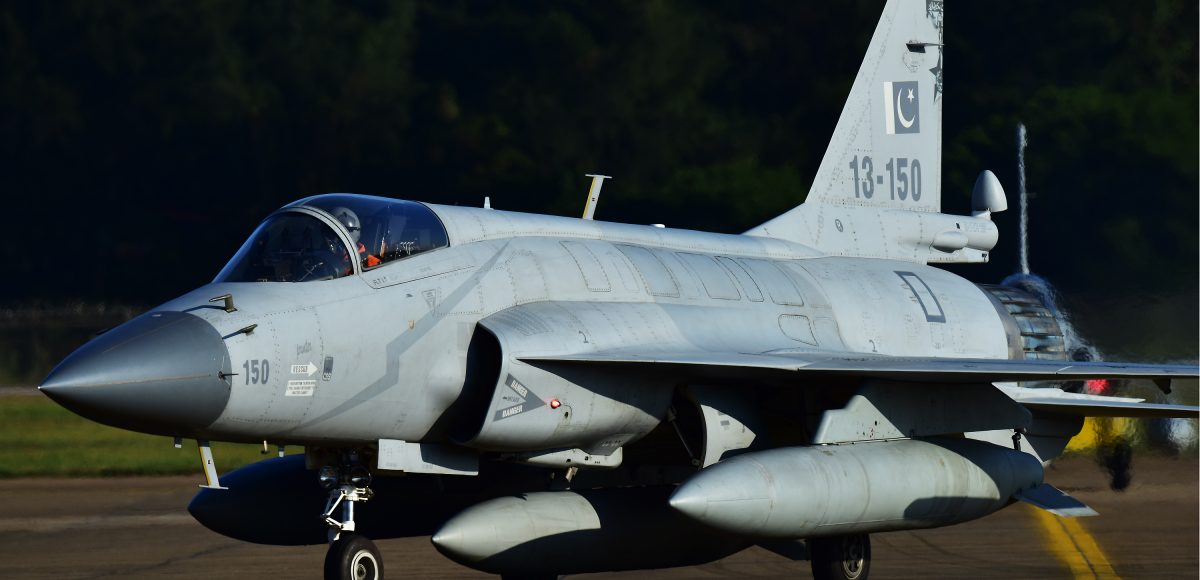fatman17
PDF THINK TANK: CONSULTANT

- Joined
- Apr 24, 2007
- Messages
- 32,563
- Reaction score
- 98
- Country
- Location

FC-1 : le Pakistan voudrait 180 appareils supplémentaires
Air
By
Henri KENHMANN
28 novembre 2016
Selon la presse locale The Express Tribune, le Pakistan se serait engagé à augmenter le nombre d’avion de combat FC-1 / JF-17 en dotation au sein des forces aériennes pakistanaises (PAF), qui passera de 70 actuellement à 250 dans les quelques années à venir. L’information est dévoilée par l’un des officiers de la PAF présents au Salon IDEAS 2016 qui a eu lieu à Karachi récemment.
Les 50 premiers FC-1 au standard Block I ont tous été livrés avant la fin 2013, à la fois par l’Usine 132 à Chengdu, en Chine, et par le PAC (Pakistan Aeronautical Complex), une entité de production aéronautique pakistanaise localisée à Kamra.

Le radar à AESA KLJ-7A
L’assemblage des appareils du standard Block II, qui seront équipés d’une perche de ravitaillement en vol et d’une nouvelle suite avionique, est actuellement en cours. Une vingtaine d’avions a été produite depuis 2014 sur les 50 de prévu, et tous les premiers avion Block I pourront aussi migrer vers le standard Block II prochainement.
Si l’information selon laquelle un total de 250 FC-1 sera en dotation pour le Pakistan est exacte, cela revient à confirmer l’acquisition du standard Block III par ce dernier. Ce nouveau mis à jour qui est en cours de développement chez l’Institut 611 Chengdu en Chine comprendra un moteur chinois WS-13B, un radar à antenne AESA KLJ-7A d’une portée de 170 kilomètres (voir notre dossier « Airshow China 2016 : KLJ-7A, le radar à AESA« ), un IRST, un viseur de casque (HMD), une nouvelle commande de vol électrique à pleine autorité redondante, et des nouveaux types de munition.
En parallèle de ces versions monoplace, l’assemblage du premier prototype biplace JF-17B est également commencé en Chine depuis le 27 Avril. Le groupe aéronautique chinois AVIC a présenté cette nouvelle variante basée sur le standard Block II au Salon de Bourget 2013.
#gallery-2 { margin: auto; } #gallery-2 .gallery-item { float: left; margin-top: 10px; text-align: center; width: 100%; } #gallery-2 img { border: 2px solid #cfcfcf; } #gallery-2 .gallery-caption { margin-left: 0; } /* see gallery_shortcode() in wp-includes/media.php */

La maquette de JF-17B biplace

La cérémonie d’assemblage du premier FC-1 biplace
Et l’ambition des Pakistanais (et des Chinois, puisque c’est eux le véritable concepteur de l’avion) ne s’arrêterait pas là apparemment, puisque le bureau d’études chinois Institut 611 Chengdu est en train d’étudier une version semi-furtive de FC-1, avec au moins la pointe avant redessinée et un canopy mono-pièce.

l’Institut 611 Chengdu a commencé le développement d’une version semi-furtive de FC-1
Bien que l’avion soit taillé sur mesure par Chengdu pour le Pakistan, mais ni l’armée de l’air ni la marine chinoise n’est intéressée par ce chasseur léger d’une masse à vide de classe 6 tonnes. A part le Pakistan qui l’a en dotation, la Birmanie a également commandé 16 appareils pour un montant de 560 millions de dollar US.
D’autres prospects seraient aussi en pourparler avec le Pakistan et la Chine pour l’acquisition de l’avion, on peut citer par exemple le Maroc, l’Algérie, le Nigéria, le Bangladesh, le Sri Lanka, l’Iran et l’Egypte. Le FC-1 constitue un excellent remplaçant à bas coût des vieux Chengdu J-7 sachant que la chaîne de production est maintenant fermée – le prix d’un FC-1 Block II est estimé à environ 25 millions de dollar. Le programme pourrait devenir une prochaine poule d’or pour le groupe AVIC et le PAC.
L’Arabie Saoudite a aussi manifesté récemment un fort intérêt sur la co-production du FC-1 avec le Pakistan. Mais si le contrat se concrétise, on pense que les avions produits seraient plutôt destinés à un autre pays comme l’Egypte.
L’affaire à suivre.
Henri K.
French anyone!!!
Bismillah ir Rahman ar Raheem
Thanks for the great share brother.
Any pictures of the PL-12G available on the web? Can't seem to find any.
It seems the Pl-12D et. al. will be no-shows - US seems to be moving to dual-pulse and away from ramjets also.
On an aside, gambit must be having a heart-attack on the passive AESA bit, right about now.
Thanks again.






